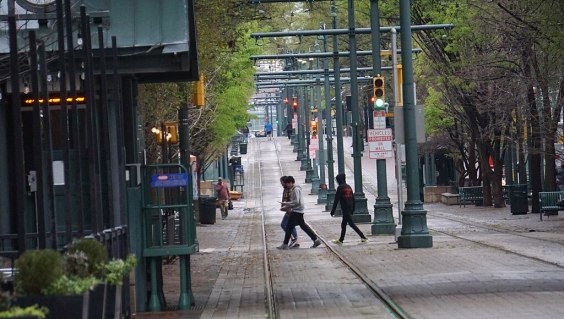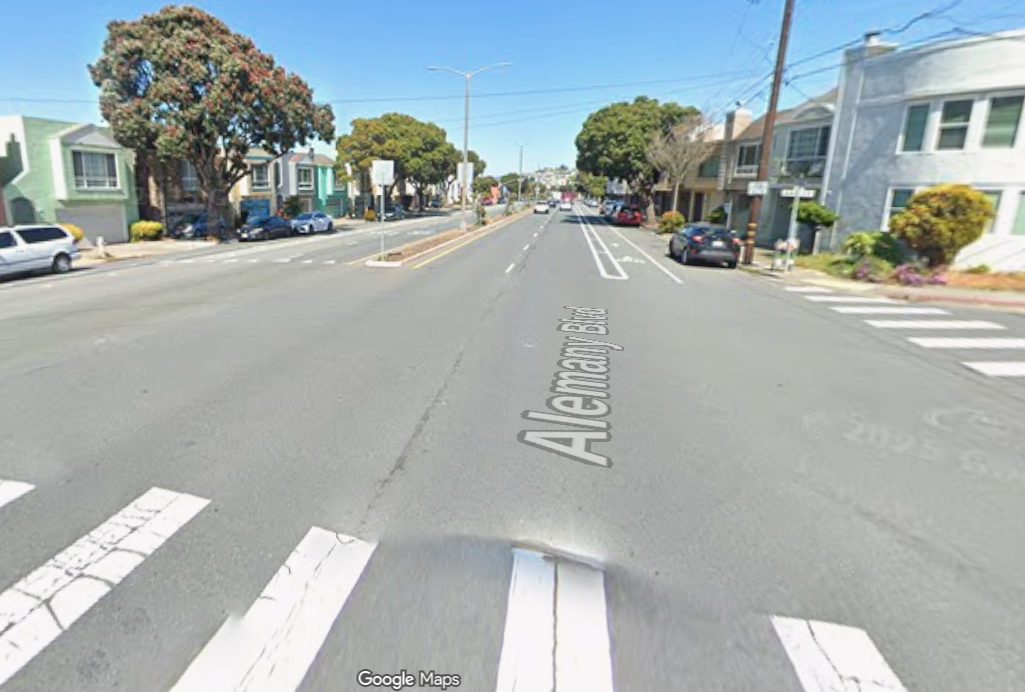
Walking should be the healthiest, most natural activity in the world. It is, after all, one of the first things humans learn to do.
But in far too many places, walking can be fatal, thanks to roads designed for speeding cars.
In 2012, 4,743 pedestrians lost their lives in traffic collisions in the U.S., and over the last decade, nearly 50,000 people have been killed while walking -- that's 16 times more Americans than were killed by natural disasters. Another 670,000 pedestrian were injured over that period, one every eight minutes.
Not all streets are equally dangerous. In a new update of its Dangerous by Design report [PDF], released today, Smart Growth America catalogs the most perilous places in the U.S. to walk. By looking at the places that are especially hazardous, we can determine the factors that are putting people at risk and figure out how to fix them.
Here's a look at what America's most dangerous streets for walking tend to have in common.
They're in the Sunbelt
Don't let the sunshine lull you into a sense of security. Sunbelt cities have hazardous streets.
According to a metric SGA designed to measure pedestrian risk, the most dangerous places for pedestrians were growing Sunbelt metros, with Florida cities still the deadliest (though they are improving).
The 10 worst large metros for pedestrians:
- Orlando
- Tampa
- Jacksonville
- Miami
- Memphis
- Birmingham
- Houston
- Atlanta
- Phoenix
- Charlotte
In the South, especially, the terrible street safety record can be traced back to historical patterns of development, said Roger Millar of Smart Growth America.
"When you look at states in the South, there was an awful lot of growth after World War II," he said yesterday in a conference call with reporters. "A lot of that Southern infrastructure came about during the auto era, the interstate era. The mindset during that time was moving cars fast. We’ve got to change that worldview."
Meanwhile, the safest cities tended to be clustered in the Northeast and Pacific Northwest, cities that either came of age before the automobile was in wide use or have started to place a high value on non-motorized transportation.
The 10 safest large metros for pedestrians:
- Boston
- Pittsburgh
- Seattle
- New York
- San Francisco
- Minneapolis
- Portland
- Chicago
- Rochester
- Cleveland
It's worth noting that in these cities, walking is not only safer, it's more widespread. In Boston, 15 percent of residents travel to work on foot. In Pittsburgh it's 11.3 percent [PDF]. That's compared with less than 2 percent in Orlando.
It's not just that more people walk because it's safer. The "safety in numbers" effect may also help explain what's going on -- walking is safer in places with more pedestrians.
"High levels of pedestrian activity do have a significant impact on driver speed," said Billy Hattaway, an executive at the Florida Department of Transportation. Speed is a leading factor in pedestrian deaths, as we'll discuss below.
They're arterial roads
Arterial roadways -- streets designed to collect traffic from smaller streets -- are notoriously hostile to people walking. But they're also difficult to avoid. A majority of pedestrian fatalities over the last decade -- 52 percent -- happened on arterial roads.
Smart Growth America notes that the engineers who design these roads are typically focused on moving automobiles with little thought for people on foot. Many businesses and residences, however, have gravitated toward these corridors. If you don't have a car, you have to navigate these deadly streets at great personal risk.
Vehicle speed plays a huge role in fatality risk. Some 61 percent of pedestrian deaths occurred on roads where the speed limit was 40 miles per hour or higher. That's compared with just 9 percent that occurred on roads where the speed limit was less than 30 mph.
They pose disproportionate risk to the elderly and minorities
A third risk factor is not geographic but demographic. Older Americans and racial minorities account for a disproportionate share of pedestrian deaths.
Native Americans, Hispanics, and African Americans bear the brunt of the hazards caused by America's dysfunctional streets. In general, people of color are less likely to own cars, and so more likely to be pedestrians in the first place. They are also more likely to live in areas near dangerous roads.
The SGA report also noted that fewer children are dying on American streets than in previous decades. But that's not entirely happy news, as researchers believe it is largely because children walk less and are less physically active than they were decades ago.





